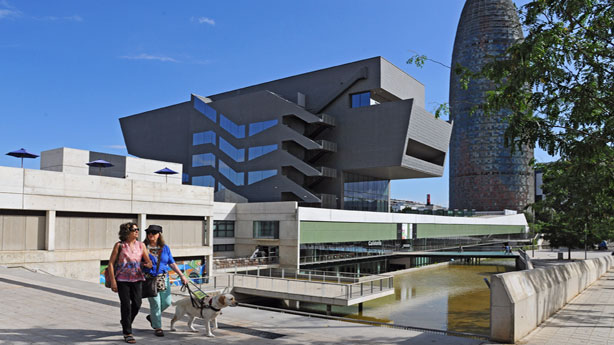Barcelona offers a wide range of interesting options all year round and opens its doors to everyone. Make the most of the sunshine to go for a stroll and take a dip in the sea on one of the city’s accessible beaches. Experience Gaudí’s nature with your hands, add a sign-language tour or an audiodescribed show to your plans… Do you need any more ideas? You’ll find them with the SEARCH FACILITY or on the SUMMARY for accessible places of interest!

The Museu del Disseny de Barcelona is situated in the Plaça de les Glòries, next to two of the city's foremost cultural facilities: L'Auditori and the Teatre Nacional. It brings together, the collections of several museums to showcase its vast heritage.
The city's museum of objects and design, the Museu del Disseny, is located in the Disseny Hub Barcelona building in Plaça de les Glòries and brings together the collections of the former museums: the Museu de les Arts Decoratives, the Museu de Ceràmica, the Museu Tèxtil i d'Indumentària and the Gabinet de les Arts Gràfiques.
The Museu del Disseny is based on a common theme «From the decorative arts to design», and is dedicated to the culture of the object, focusing on pieces that are often from the everyday sphere, their design, manufacturing process, use and distribution, aesthetic and functional obsolescence, all from a 21st-century perspective.
Inside the Museu del Disseny you'll find world-renowned iconic objects designed in Barcelona, like the Filomatic, a manual razor with interchangeable heads; Miguel Milà's floor lamp, which is a landmark piece of Catalan and Spanish design; André Ricart's ice tongs, designed in 1964; the Minipimer MR2, a sturdy hand-held blender, which was one of the first to be sold on the Spanish market; the legendary Marquina oil cruet; and the Impala motorbike, which was created in 1962, are some of the examples of successful Catalan design you'll find at the Museu del Disseny.
Barcelona hosted the Olympic Games in 1992. This historic milestone resulted in a series of elements designed and created specially for the occasion. Today, some of them are on display at the Museu del Disseny. They include the Olympic bid dossier submitted to the International Olympic Committee, which resulted in Barcelona being awarded the games; the official mascot, Cobi; the Barcelona'92 logo by the designer Josep Maria Trias i Folch; the official poster; and the Olympic torch, which was one of the most important symbols of the 1992 Barcelona Olympics.
The Museu del Disseny also has an extensive collection of fashions, with pieces by leading Spanish and international designers, accessories and haute-couture dresses from the 20th and 21st centuries. You'll also find Coptic and Hispano-Arabic fabrics, tapestries, embroidery work, calicoes and period clothing.